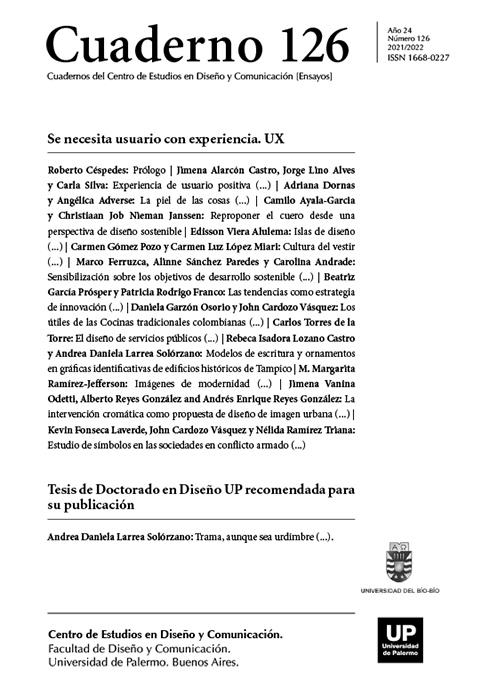Reproponer el cuero desde una perspectiva de diseño sostenible
Abstract
The manufacturing of leather is considered one of the most polluting practices of the current industrial state. Exploration from different fields to create more sustainable alternatives are arising worldwide. In the Design field, this has also become a fundamental aspect of being considered while developing products. The following article aims to present a research methodology applied to a design course where designers are challenged to find more circular alternatives from a materials perspective. Designers are invited to work hand in hand with local artisans to exchange knowledge and propose a viable opportunity. Four projects are presented to understand the different approaches when design knowledge is combined with crafts knowledge. This exercise sets a scenario for product designers to understand how to search for alternatives to a highly demanded material desired by its properties and qualities but with a high environmental impact. By following this method, designers can find novel alternatives to products, and artisans can innovate in their production techniques to compete in the local markets.
References
Acicam (2019). Como va el sector. Available at: https://acicam.org/download/como-va-el-sector-diciembre-2019-2/(retrieved 20.10.20).
Ayala-Garcia, C. & Rognoli, V. (2019). The Materials Generation. In L. Rampino, I. Mariani, (Eds). Advancements in Design Research. Milano: Franco Angeli.
Baker I. (2018). Leather. In: Fifty Materials That Make the World. Springer: Cham. https://doi.org/10.1007/978-3-319-78766-4_22
Crosby, A. (1972). The Columbian Exchange. Biological and cultural consequences of 1492. Westport: Greenwod Press.
Designcouncil (2019). What is the framework for innovation? Design Council’s evolved Double Diamond. Available at: https://www.designcouncil.org.uk/news-opinion/what-framework-innovation-design-councils-evolved-double-diamond (retrieved 20.10.20).
Díaz-Casallas, D. M.; Castro-Fernández, M. F.; Bocos, E.; Montenegro-Marin, C. E. &
González Crespo, R. (2008). Bogota River Water Quality Assessment Based on the Water Quality Index. Sustainability 2019, 11, 1668.
Joseph, K. & Nithya, N (2009). Material flows in the life cycle of leather. Journal of Cleaner Production 17 (2009) 676-682
Macarthur, E. (2013). Towards the Circular Economy: Opportunities for the Consumer Goods Sector. Ellen MacArthur Foundation, Cowes, United Kingdom.
Moktadir, M. A.; Rahman, T.; Rahman, M. H.; Ali, S. M. & Paul, S. K. (2018). Drivers to sustainable manufacturing practices and circular economy: A perspective of leather industries in Bangladesh. Journal of Cleaner Production, 174, 1366-1380. https://doi.org/ https://doi.org/10.1016/j.jclepro.2017.11.063
Procolombia (2015). Leather Manufacturing. The Colombian Leather Manufacturing Conquers the International Market. Available at: https://compradores.procolombia.co/en/explore-business-opportunities/leather-manufacturing (retrieved 20.10.20).
Rognoli, V.; Bianchini, M.; Maffei, S. & Karana, E., (2015). DIY Materials. Materials and Design, 86(2015), 692-702.
Rosu, L.; Varganici, C.; Crudu, A.; Rosu, D. & Bele, A. (2018). Ecofriendly wet-white leather vs. conventional tanned wet-blue leather. A photochemical approach. Journal of Cleaner
Production, 177, 708-720. https://doi.org/https://doi.org/10.1016/j.jclepro.2017.12.237 Sillanpää, M. & Ncibi, C. (2019). Getting hold of the circular economy concept. The Circular Economy. Amsterdam, Academic Press. pp. 1-35. https://doi.org/10.1016/B978-0-12- 815267-6.00001-3
Los autores/as que publiquen en esta revista ceden los derechos de autor y de publicación a "Cuadernos del Centro de Estudios de Diseño y Comunicación", Aceptando el registro de su trabajo bajo una licencia de atribución de Creative Commons, que permite a terceros utilizar lo publicado siempre que de el crédito pertinente a los autores y a esta revista.


